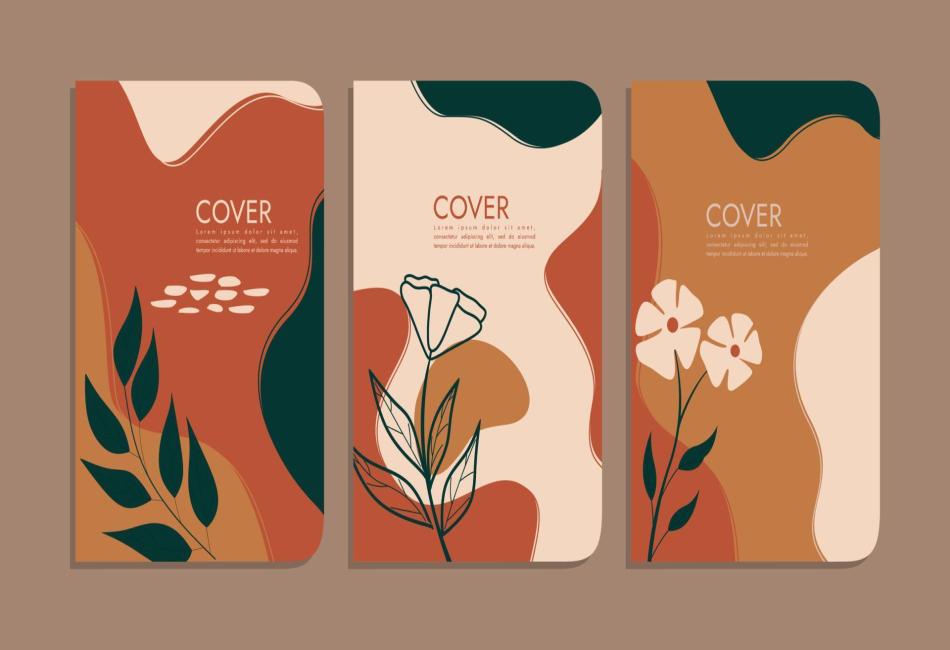In a publishing world dominated by digital design and AI-generated imagery, hand-drawn book covers offer something refreshingly unique: a human touch. They evoke the charm of traditional craftsmanship and reflect an intimate connection between art and storytelling. Whether it’s a whimsical sketch, a detailed illustration, or an abstract line drawing, hand drawn covers bring individuality and personality to a book in a way few other styles can.
From children’s literature to literary fiction, and even non-fiction, hand drawn covers are gaining new momentum in an age where authenticity, creativity, and emotional resonance are more valued than ever. This article explores the significance, styles, advantages, and enduring appeal of hand drawn book covers—and why they continue to captivate readers and publishers alike.
1. What Are Hand Drawn Book Covers?
Hand drawn book covers are designs that incorporate illustrations created manually—whether with pencil, ink, watercolor, or other artistic mediums. Unlike digital artwork created entirely on a computer, these covers are rooted in traditional illustration methods, sometimes later digitized for print but still preserving the feel of handcrafted art.
These illustrations can vary widely in style:
-
Loose and sketchy line art
-
Detailed ink or pencil drawings
-
Whimsical cartoon-style images
-
Watercolor scenes or character portraits
-
Abstract symbolic elements
Regardless of the technique, the hallmark of a hand drawn cover is its unique and organic quality. Each line, texture, and brushstroke reflects the artist’s vision and touch.
2. Why Hand Drawn Covers Stand Out
In today’s digital age, readers are drawn to things that feel personal, authentic, and distinct. Hand drawn covers stand out on crowded bookshelves and digital storefronts for several reasons:
a. Authenticity
Hand drawn artwork conveys a sense of authenticity that resonates with readers. It feels personal, handcrafted, and emotionally rich—qualities that can help form a connection even before a single word is read.
b. Uniqueness
No two hand drawn covers are exactly alike. This uniqueness makes them particularly appealing to indie authors, small publishers, and collectors who value originality and artistic flair.
c. Emotional Impact
Handmade illustrations can evoke emotion more effectively than sterile digital graphics. Whether playful, dark, dreamy, or nostalgic, hand drawn imagery adds depth and mood to the book’s presentation.
d. Timeless Appeal
Hand drawn covers have a classic, enduring quality. They evoke memories of vintage books and cherished childhood reads, making them feel both familiar and fresh.
3. Popular Genres That Use Hand Drawn Covers
While hand drawn covers can work for almost any genre, they are especially prevalent in the following categories:
a. Children’s Books
Hand drawn covers are a staple in children’s publishing. Their whimsical, colorful, and imaginative nature instantly captures the attention of young readers and parents alike.
b. Young Adult (YA) Fiction
Many YA books use hand drawn or illustrated covers to create a sense of uniqueness, fantasy, or emotional depth. These designs often mirror themes of coming-of-age, identity, and wonder.
c. Fantasy and Magical Realism
Illustrations allow for world-building that photographic or minimalist covers can’t always achieve. A hand drawn dragon, enchanted forest, or whimsical village sets the tone for immersive storytelling.
d. Poetry and Literary Fiction
Books in these genres benefit from the introspective, artistic sensibility that hand drawn designs offer. A simple sketch or symbolic illustration can hint at deeper meanings within.
e. Graphic Novels and Memoirs
Graphic memoirs and artistic non-fiction often feature hand drawn covers that reflect the storytelling style inside—making the book feel more cohesive and inviting.
4. Design Techniques and Tools
Creating a hand drawn book cover involves a blend of traditional techniques and modern production tools. Some common tools and methods include:
-
Pencil and Ink: Ideal for sketching or detailed black-and-white illustrations.
-
Watercolor and Acrylic: Add color, softness, and painterly textures.
-
Digital Tablets (e.g., Wacom, iPad Pro): Allow artists to draw by hand with a stylus while making digital editing easier.
-
Mixed Media: Combining various elements—like paper textures, stamps, or collaged materials—for a more tactile look.
-
Digitization: Scanning or photographing the artwork for high-quality print production, ensuring the original look is preserved.
Once digitized, the artwork can be layered with typography, title elements, and publisher branding using design software like Adobe InDesign or Photoshop.
5. Notable Examples of Hand Drawn Book Covers
“The Little Prince” by Antoine de Saint-Exupéry
One of the most iconic examples of a hand drawn book cover, created by the author himself. The delicate line drawings and watercolor illustrations have become inseparable from the book’s identity.
“Coraline” by Neil Gaiman (Illustrated by Dave McKean)
This eerie children’s fantasy uses haunting hand drawn illustrations to reflect the dark and whimsical tone of the story.
“The One Hundred Nights of Hero” by Isabel Greenberg
A graphic novel that blends folklore with feminist themes, its cover is richly illustrated with hand drawn elements that mirror the storytelling inside.
6. Benefits for Independent Authors and Small Publishers
For indie authors and small publishers, hand drawn book covers offer several strategic advantages:
-
Affordable Artistic Services: Many freelance illustrators specialize in book cover art, often offering flexible pricing for custom illustrations.
-
Stronger Branding: A unique, illustrated cover helps build a recognizable author brand and creates a consistent visual identity across a series or genre.
-
Market Differentiation: In a sea of stock-photo covers, a hand drawn design immediately signals something different and thoughtful.
Many successful independent books owe part of their popularity to eye-catching illustrated covers that created intrigue at first glance.
7. Challenges and Considerations
While hand drawn covers offer many benefits, they also come with a few considerations:
a. Time-Consuming Process
Unlike quick digital mockups, creating an illustrated cover by hand takes time—from conceptual sketches to final artwork and revisions.
b. Finding the Right Illustrator
Working with the right artist is crucial. Their style must align with the book’s tone and your target audience’s expectations.
c. Balancing Art with Typography
Great artwork still needs great typography. Overly detailed illustrations can overshadow the title or author’s name if not balanced carefully.
d. Print Compatibility
High-resolution scans or professional digitization are essential to ensure the artwork looks sharp in both print and digital formats.
8. The Future of Hand Drawn Covers in a Digital Age
While AI and automated design tools are becoming more prevalent, the demand for human-made, emotionally resonant design continues to grow. In fact, hand drawn covers may become even more desirable as a counterbalance to generic, AI-generated visuals.
Many hybrid approaches now combine hand illustration with digital editing, creating a seamless blend of old and new. This fusion allows for greater flexibility in design while maintaining the character and charm of hand-drawn work.
Furthermore, as self-publishing platforms grow, more authors are recognizing the value of investing in original, hand illustrated covers to enhance their market appeal.
Conclusion: Art That Connects
Hand drawn book covers remind us that storytelling is as much a visual experience as it is a literary one. They invite readers into the author’s world with a visual warmth and authenticity that no algorithm can replicate. Whether whimsical or profound, minimal or intricate, hand drawn covers carry a sense of care and creativity that enriches the book as a whole.
In a fast-paced, digital-first world, hand drawn book covers are a beautiful reminder of the enduring power of human artistry. For readers, they offer visual delight. For authors, they provide a signature look. And for the world of publishing, they keep the art of illustration alive—one cover at a time.




